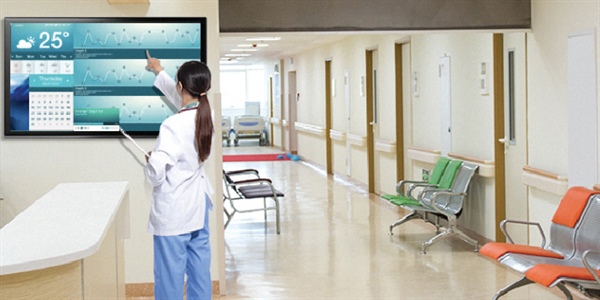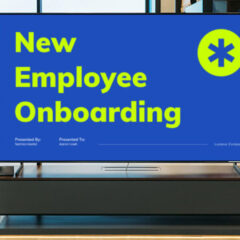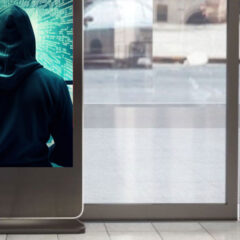How Digital Signage in Healthcare Benefits Both the Patient and the Operator

In a previous post, we discussed the current and potential use cases of digital signage in financial services, from promoting and updating interest rates in real time to providing helpful information while customers wait in line at the service counter.
Digital signage can also deliver tremendous value in the healthcare industry. Just as a visit to a bank can be confusing and stressful for the customer, a visit to the hospital or doctor’s office can be overwhelming and unpredictable for the patient. And today’s patient demands the same consumer-like experience from a healthcare provider as they do from any other store or service provider.
Digital signage uses strategically placed, high-definition displays to deliver content to patients, visitors and staff. Video, audio, images and text are used to provide information, directions, promotional messages and entertainment to engage viewers and enhance the overall patient experience. All content can be remotely managed, updated and customized so admins don’t have to configure each individual display.
When checking in, patients can use self-service kiosks to enter data digitally rather than filling out endless paperwork. This reduces data entry errors, eliminates the need for staff to manually re-enter the same data, and makes it easier to share data with clinicians, nurses and staff. By having patients enter data once and automatically sharing that data with all who need it, you can dramatically reduce administrative costs.
One of the primary benefits of digital signage is to reduce perceived wait times and help patients relax while they wait. Stress and frustration tend to build as people wait, but engaging, entertaining content can make the wait seem shorter and contribute to fewer complaints. You can also use this opportunity to educate patients, provide health tips, and give updates on new hires, new services, policy changes, and hours of operation. Digital signage in waiting rooms can also reduce the strain on staff because they don’t have to field as many questions or deal with as many angry patients.
Nothing adds to the anxiety of wait times and health problems like the stress of feeling lost. In hospitals and other large facilities that are difficult to navigate, digital signage can be used to help patients find their way. Wayfinding kiosks with interactive maps and search functionality are valuable tools for finding a specific person, department or service. Of course, everyone needs to eat, and digital signage can direct patients and loved ones to cafeterias and provide instructions for ordering food.
Behind the scenes, digital signage can be used to communicate with staff. You can coordinate meetings, announce schedule changes, introduce new policies and services, and provide training. Interactive displays also allow staff to search for the information they need rather than digging through long email chains or making phone calls.
SageNet’s new SageVIEW digital signage platform includes a healthcare solution that not only delivers value to the viewer but also eliminates the headaches associated with deployment and management. Let us show you how we help hospitals, medical practices and other healthcare providers improve the patient experience, increase operational efficiency, and keep guests and staff informed.
More Insights
-
 Digital Experiences, SageVIEW Approach
Digital Experiences, SageVIEW ApproachHow Digital Signage Boosts Workforce Productivity
-
 Digital Experiences
Digital ExperiencesHow Digital Signage Can Play a Role in Reducing Workplace Stress
-
 Digital Experiences
Digital Experiences7 Steps for Upgrading and Enhancing a Digital Signage Network
-
 Digital Experiences
Digital ExperiencesWhy You Should Make Digital Signage Security a High Priority
